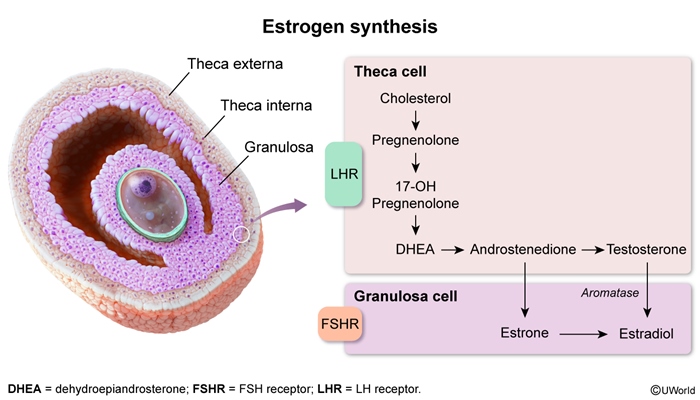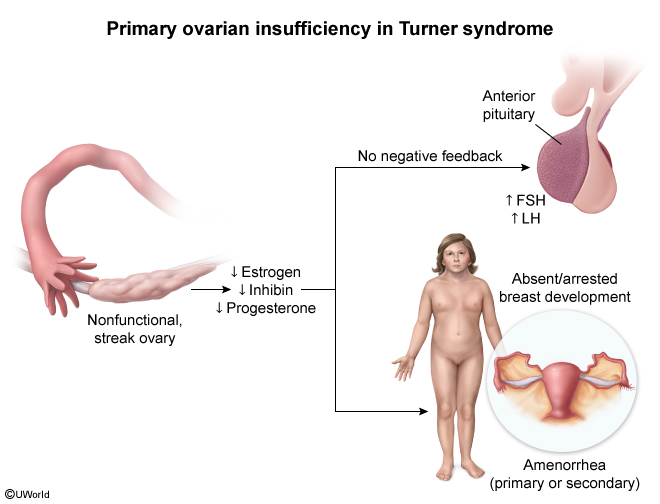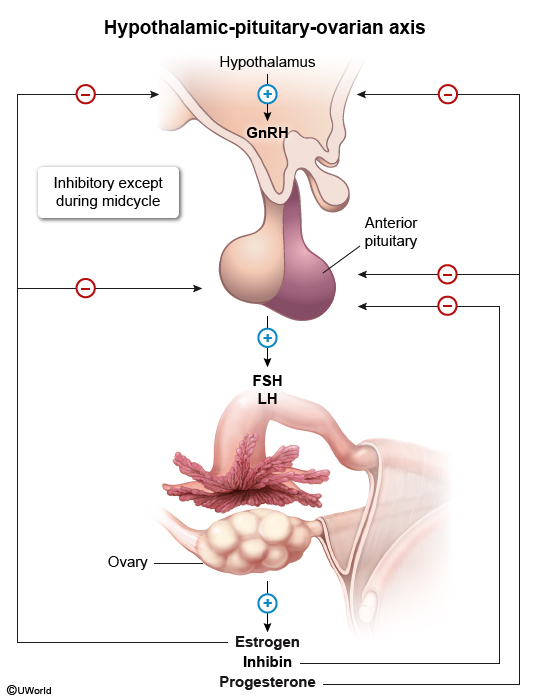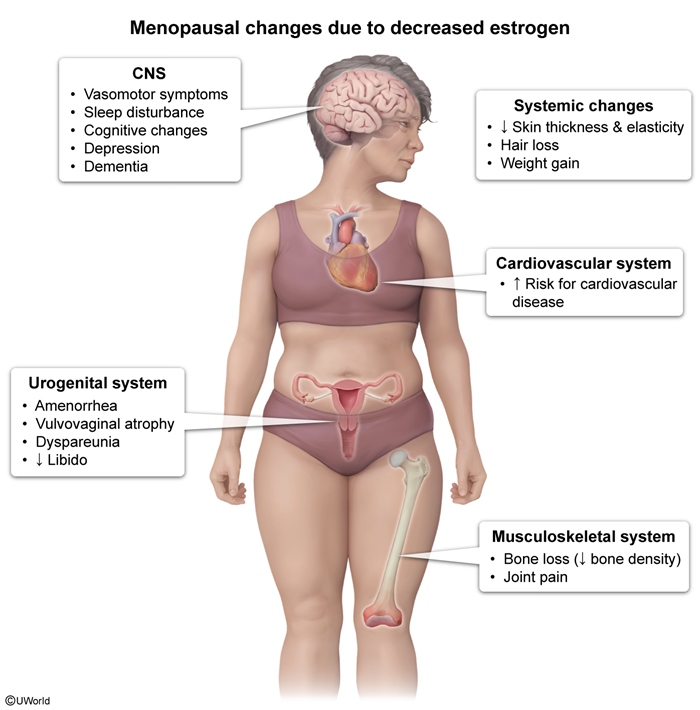Primary Ovarian Insufficiency
Article Sections
Introduction
Primary ovarian insufficiency (POI) is characterized by insufficient ovarian function associated with elevated FSH levels (ie, hypergonadotropic hypogonadism) in women age <40. POI typically presents with abnormal uterine bleeding or amenorrhea, infertility, and symptoms of estrogen deficiency similar to those experienced during menopause.
Pathogenesis and risk factors
Ovarian function (ie, hormone production, ovulation) requires functioning ovarian follicles. Ovarian follicles naturally undergo depletion with increasing age. In most women, they are completely depleted by age 51, the average age of menopause.
Patients with POI lose ovarian function sooner (ie, age <40); the most common pathogenesis is the accelerated depletion of primordial follicles (Figure 1). In most patients, the cause of accelerated follicle depletion is idiopathic; however, several risk factors and underlying causes have been identified, including:
Continue Learning with UWorld
Get the full Primary Ovarian Insufficiency article plus rich visuals, real-world cases, and in-depth insights from medical experts, all available through the UWorld Medical Library.
Figures



